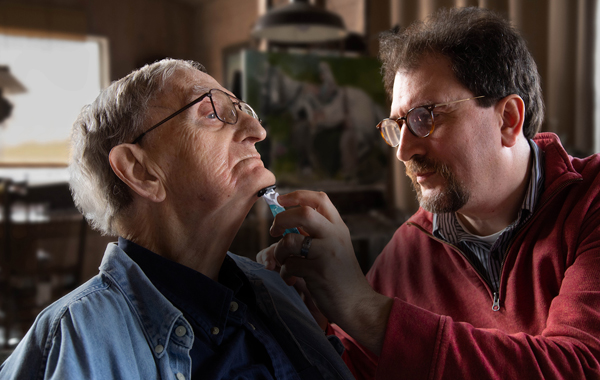- La Feria Community Holds Succesful Business Mixer Event
- Little Nashville to Take Place in Downtown Mercedes
- Lions Basketball Captures District Gold
- La Feria ISD Students Compete in Regional Chess Tournament
- Lions End First Half of 32-4A on a High Note
- La Feria ISD Held Another Successful Parent Conference
- Strong Appearance for Lions at Hidalgo Power Meet
- LFECHS Students Get to Meet Local Actress
- Students Participate in Marine Biology Camp
- Two LFECHS Students Qualify for All-State Band
How to Navigate the Challenges of Caregiving
- Updated: January 10, 2020
(StatePoint) As the population of older U.S. adults grows, more Americans are taking on long-term caregiving duties for loved ones. An estimated 43.5 million adults in the U.S. have provided unpaid care in the past 12 months, according to AARP.
“While caregiving presents many opportunities for growing strong bonds with loved ones, the work itself can be demanding, eventually taking a toll on those shouldering the burden,” says Lakelyn Hogan, a gerontologist and caregiver advocate at Home Instead Senior Care.
Hogan and the experts at Home Instead Senior Care are sharing tips to navigate the challenges.
Use Online Resources
To fully advocate for your loved one, it’s necessary to understand his or her medical conditions and the specific areas where extra help is needed. Doing so will help you secure support services, get information from doctors, ensure medications are being administered safely and even help you make appropriate meal and transportation arrangements. Most reputable sources of condition-specific information can also double as a place for finding care and support.
Search for Innovative Tools
Innovative companies are taking note of the needs of caregivers and are designing everyday products to help them make daily tasks easier and more comfortable for all involved. In the realm of personal care, this trend is especially important: personal care activities were identified in an AARP survey as among the most challenging daily activities caregivers must manage.
When it comes to shaving, a task that seems simple enough when performed on oneself, things can get tricky. Currently, 46 percent of caregivers are using a disposable razor to provide an assisted shave to their loved one at home, according to a Gillette survey. The problem? When caregivers use one of the 4,000 razors designed for shaving oneself, turning it around to use on someone else is trickier than you might expect — not to mention time-consuming. Fortunately, there is now a razor specifically engineered for assisted shaving. A first of its kind, the Gillette TREO razor includes special features that protect against nicks and cuts, and its clog-free design doesn’t require the use of water. What’s more, the razor has an ergonomic handle providing greater comfort and control. These updates are particularly critical, as sensitive and thinning skin is prevalent among older adults and is a common side effect of many medications. To learn more, visit Gillette.com/TREO.
As more companies introduce tools designed for caregivers, such personal care tasks as shaving have the potential to become easier, safer and more comfortable.
Make Space for Yourself
Prioritizing your own health and happiness is critical. After all, if your health suffers, it could make it impossible for you to continue caregiving. Rely on family and friends or a part-time professional to step in and give you a chance to recharge. Use the personal time to read, journal, exercise, take a nature walk, visit your doctor or simply meet with friends. You may also benefit from joining a caregivers’ support group. Luckily, social media has made it simple for people to find one another and connect.
While the roles and responsibilities of caregiving vary, leveraging the resources designed to universally assist caregivers can help you navigate the many challenges of daily life.



